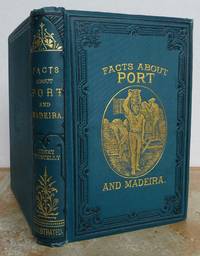
Rezumo de todas as regras, e preceitos da Cantoria, assim da musica metrica, como do canto-chão, dividido em duas partes. Composto por … para o uso dos seus discipulos.
by LEITE, Antonio da Silva
- Used
- first
- Condition
- See description
- Seller
-
New York, New York, United States
Payment Methods Accepted
About This Item
Porto, Na Officina de Antonio Alvarez Ribeiro, 1787.. FIRST and ONLY EDITION. 4°, contemporary decorated wrappers (hole in front wrapper, about 4.5 cm. in diameter, crudely repaired). Small woodcut vignette on title page. Woodcut headpieces and initials. Small stain to front free endleaf, carrying through slightly to half title, and even more slightly to title page. Overall in very good condition. Early [contemporary?] ink inscription on front free endleaf: "Este Arte he de Joseph de Campos // do Lugar dos Casastos [?] de Cabanas." Further ink inscriptions [in the same hand?] on verso of rear free endleaf: "Campos" [in upper outer corner]; "Cabanas" [in upper inner corner]; and "Joseph de Campos" [in lower outer corner]. Another faint early inscription on decorated wrapper, illegible. (4 ll.), 43, (1) pp., 2 engraved plates [1 of them folding]. ***
FIRST and ONLY EDITION of this instruction manual for those learning to sing, including instructions on plainsong. It is a true beginner's guide to reading music - the perfect primer for an intelligent would-be musician who is entirely lacking in prior training. Part I offers verbal descriptions of keys (using solfège, as is common), notes, musical notation including lines and spaces, the F-, G- and C-clefs (including a description of the C-clef as movable, and describing what lines it can be moved to), accidentals, notation of accidentals, complete lists of relative major and minor keys (excepting C major / A minor, which one can assume is implied), examples and explanations of intervals from a whole step to an octave, three basic tempos including common ("quaternary") time, three-four ("ternary") time, and half ("binary") time and the various numbers than can reasonably be imposed over each signature's respective 4, 3, or 2 (happily, there is no mention of complex, additive, fractional or irrational time signatures), and a verbal explanation of note lengths which might confound the beginner if not for the folding "Pauta" plate that is helpfully referred to for visual reference.
Part II builds on Part I by delving deeper into the properties of scales and key signatures, including chords and tri-tones.
The author (1759-1833), Porto's most notable musician of the late eighteenth and early nineteenth century, was choirmaster at the Cathedral of his native Porto for many years. When he published this Resumo, at age barely 28, he already taught singing, and by 1796 was also a popular instructor for the guitar, publishing a work on that subject. He wrote religious compositions (his Tantum ergo was still being sung in Lisbon 80 years later) as well as two operas and several patriotic hymns.
*** Innocêncio I, 270: without collation; VIII, 305; XXII, 358. Albuquerque, A edição musical em Portugal (1750-1834) 239 (calling for only 6 preliminary pages). Vasconcellos I, 193-5: calling for only 3 preliminary leaves. Vieira II, 19-26: without mention of the 4 preliminary leaves. Daciano p. 86. Not in Lambertini, who lists the 1796 Estudo de guitarra (1432). NUC: DLC.
Reviews
(Log in or Create an Account first!)
Details
- Bookseller
- Richard C. Ramer Old & Rare Books
(US)
- Bookseller's Inventory #
- 37932
- Title
- Rezumo de todas as regras, e preceitos da Cantoria, assim da musica metrica, como do canto-chão, dividido em duas partes. Composto por … para o uso dos seus discipulos.
- Author
- LEITE, Antonio da Silva
- Book Condition
- Used
- Edition
- FIRST and ONLY EDITION
- Publisher
- Porto, Na Officina de Antonio Alvarez Ribeiro, 1787.
- Weight
- 0.00 lbs
- Keywords
- music, Portugal, plainsong, choir, education, song, singing, instruction, scales, chords, key signatures, Solfege, Porto author
Terms of Sale
Richard C. Ramer Old & Rare Books
30 day return guarantee, with full refund including shipping costs for up to 30 days after delivery if an item arrives misdescribed or damaged.
About the Seller
Richard C. Ramer Old & Rare Books
Biblio member since 2012
New York, New York
About Richard C. Ramer Old & Rare Books
We have been in business since 1969. We work from private premises, both in New York and in Lisbon, Portugal, and admit visitors by appointment. Online lists are issued regularly.
Glossary
Some terminology that may be used in this description includes:
- Title Page
- A page at the front of a book which may contain the title of the book, any subtitles, the authors, contributors, editors, the...
- Wrappers
- The paper covering on the outside of a paperback. Also see the entry for pictorial wraps, color illustrated coverings for...
- Vignette
- A decorative design or illustration placed at the beginning or end of a ...
- Verso
- The page bound on the left side of a book, opposite to the recto page.
- Leaves
- Very generally, "leaves" refers to the pages of a book, as in the common phrase, "loose-leaf pages." A leaf is a single sheet...
- Plate
- Full page illustration or photograph. Plates are printed separately from the text of the book, and bound in at production. I.e.,...
- Half Title
- The blank front page which appears just prior to the title page, and typically contains only the title of the book, although, at...







![Folhinha da Terceira para o anno de 1832, bixesto [sic].](https://d3525k1ryd2155.cloudfront.net/h/521/481/1038481521.0.m.0.jpg)
